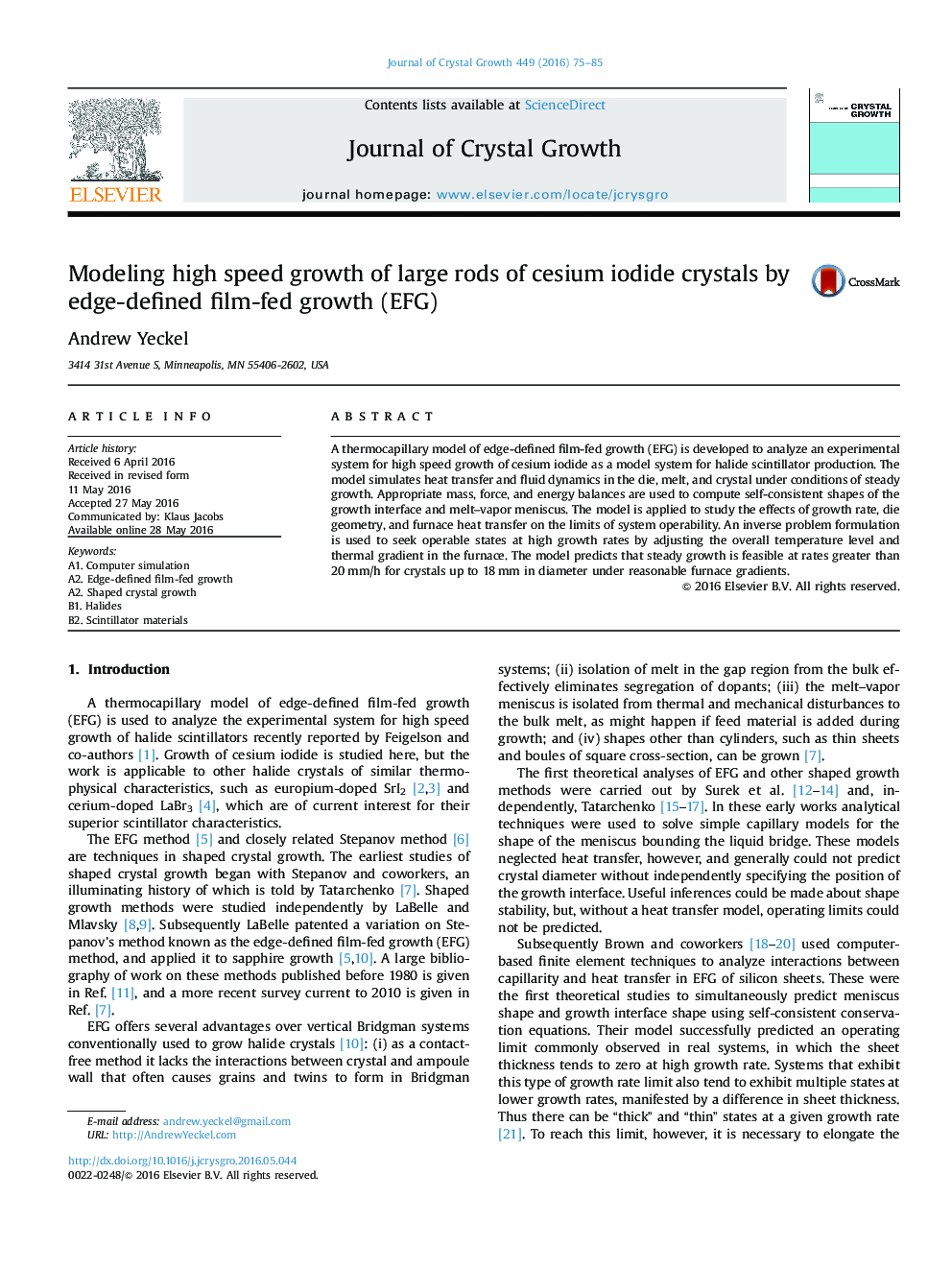| کد مقاله | کد نشریه | سال انتشار | مقاله انگلیسی | نسخه تمام متن |
|---|---|---|---|---|
| 1789541 | 1524380 | 2016 | 11 صفحه PDF | دانلود رایگان |

• Thermocapillary model developed for edge-defined film-fed growth.
• Cesium iodide is model system for studying growth of halide scintillators.
• Effects of growth rate, temperature level, and furnace gradient are predicted.
• High speed growth (>10mm/h) of large cylinders (up to 1.8 cm) is predicted.
• Die geometry can be used to alter shape of growth interface.
A thermocapillary model of edge-defined film-fed growth (EFG) is developed to analyze an experimental system for high speed growth of cesium iodide as a model system for halide scintillator production. The model simulates heat transfer and fluid dynamics in the die, melt, and crystal under conditions of steady growth. Appropriate mass, force, and energy balances are used to compute self-consistent shapes of the growth interface and melt–vapor meniscus. The model is applied to study the effects of growth rate, die geometry, and furnace heat transfer on the limits of system operability. An inverse problem formulation is used to seek operable states at high growth rates by adjusting the overall temperature level and thermal gradient in the furnace. The model predicts that steady growth is feasible at rates greater than 20 mm/h for crystals up to 18 mm in diameter under reasonable furnace gradients.
Journal: Journal of Crystal Growth - Volume 449, 1 September 2016, Pages 75–85